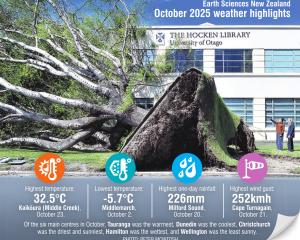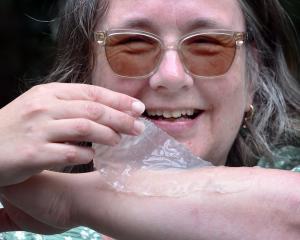The Dunedin City Council will review the performance of its water infrastructure after last week's flood, and may accelerate major improvements to ease pressure on South Dunedin, it has been confirmed.
The move comes as council staff conceded they could not yet say if their network of pipes had performed adequately, having never modelled the intensity of rainfall that fell on the city last Wednesday.
Council water and waste group manager Laura McElhone said South Dunedin's stormwater network was - like the rest of the city - designed to cope with a one-in-10-year downpour.
That was considered the industry standard across New Zealand, but, beyond that, water was always expected to flood surrounding streets, which acted as a ''secondary flow path'', she said.
The aim was to keep the water away from the habitable areas of people's homes until the stormwater system could catch up and the water drained away, she said.
The fact that failed to happen in some areas would need to be reviewed, as would the reasons why water had not drained ''as fast as we expected it to'', she said.
''Obviously, the impact it's had on people's lives is very significant, so we need to learn what we can from that, but it's just too early at the moment to know whether or not the system coped as well as it could,'' she said.
Attention would initially focus on the Portobello Rd pumping station, which was designed to pump stormwater through a nearby outfall into Otago Harbour.
The network near the pumping station appeared to have ''a potential bottleneck'' which may have slowed the flow of water into the pumping station, thereby prolonging flooding, she said.
The council had $1million earmarked for improvements in the area in 2019-20, but would ''obviously ... be looking closely at the stormwater system'' after the flood, she said.
That could also include bringing forward other planned improvements to ease pressure on South Dunedin's pipes, she said.
That would begin with a planned upgrade of stormwater and wastewater pipes in Hillside Rd, which aimed to address a stormwater bottleneck and divert more wastewater to Green Island, she said.
Detailed design work was scheduled for the 2015-16 year, but ''my guess is that will probably get accelerated as a result of this'', she said.
Other work planned in Kaikorai Valley and Northeast Valley would also help address wastewater overflow issues in South Dunedin, she said.
Much of the city's wastewater flowed through South Dunedin in a main intercepting sewer that led to the Tahuna treatment plant.
As a result, problems occurring in other parts of the city could manifest themselves in South Dunedin, as happened when wastewater overflowed, she said.
''We don't need to renew South Dunedin's sewers to fix South Dunedin's problems - which sounds weird, but it's true.
''The issue is the condition of the pipes in areas that feed to there, not the condition of the pipes there themselves,'' she said.











